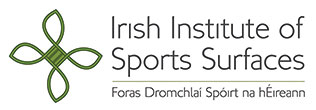
Bias in research described as “a concentration on an interest in one particular area or subject” (Smith and Noble 2014). Ethical research should ensure unprejudiced consideration of a research question to avoid bias. Sources of bias as described can occur in any industry (which includes Turf Science) which may occur in the design, planning, data collection, analysis, and publication phases of research. Research needs to be focused on collection, analysis and processing the results to understand the cause or reason for a situation.
Research usually starts with a reason, a hypothesis, a literature review, and a quantitative data analysis. Has the author discussed the possibility of bias in the research data or analysis to provide a more worthwhile meaning and evaluation of the results.
Ask these questions before accepting any research article which should be easily answered in any well written research article to our industry.
How is the research impartial from commercial influence?
What are authors professional qualifications and background?
Is the article peer reviewed?
Has it declared its strengths and weaknesses?
Is the range of statistics comprehensive?
Is there Coherence in the title of the article, the abstract and introduction?
Are results coherent with the purpose of the research ?
Is the research purpose clear or an afterthought?
Has the research clearly described how it sourced its data analysis objectively?
How was the data analysis was collected ?
Is there a clear hypotheses proposed for the research question?
Does the data analysis and discussion contain any subjective views?
Is there any risk factor analysis provided to understand the rationale.
Is the independent variable verifiable in the data results ?
Is the data gathering method clear, displayed clearly in tables and how representative it is ?
Conclusion
A research article should be clearly defined topic easily readable with background of information and defines the gap in knowledge. The author should clarify the scope and methodology approach without any muddled confusion.
Previous research articles on the chosen topic should be reviewed and interconnect the relationships, commonalities, confirmations, gaps and inconsistencies between different studies, along with a discussion of implications for the field and needed next steps.
Writing a great review article is an art, which is largely dependent on the time, effort and expertise of junior authors, expert advisors, reviewers and journal editors. The scientific community will surely benefit from authors taking the points above into consideration.
References
Daldrup-Link, H.E., 2018. Writing a review article-Are you making these mistakes?. Nanotheranostics, 2(2), p.197.
Pannucci, C.J. and Wilkins, E.G., 2010. Identifying and avoiding bias in research. Plastic and reconstructive surgery, 126(2), p.619.
Smith, J. and Noble, H., 2014. Bias in research. Evidence-based nursing, 17(4), pp.100-101.

